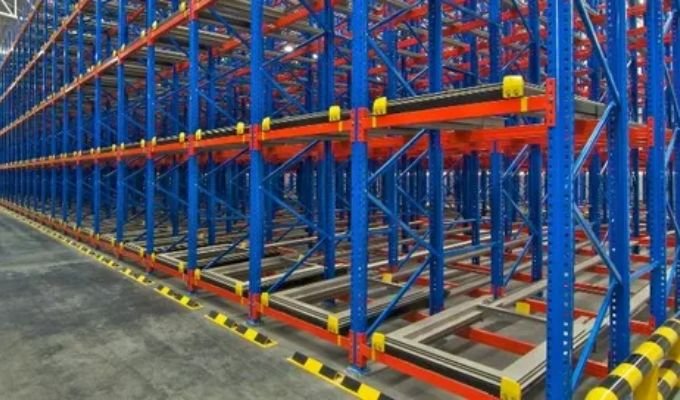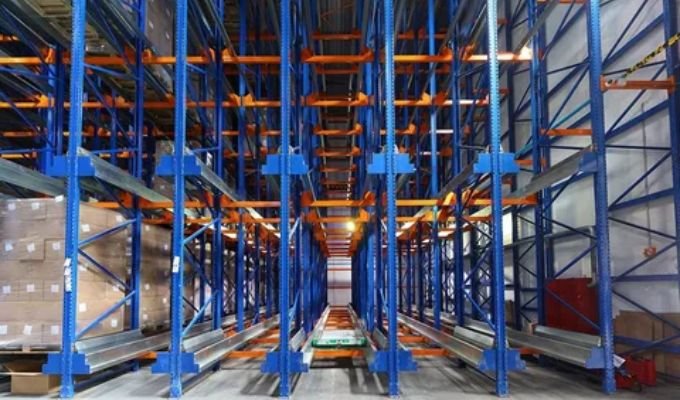When it comes to practical storage and inventory management in the UAE, familiarizing yourself with warehouse rack terminology is crucial. Whether you’re establishing a new warehouse in Dubai, expanding storage space in Abu Dhabi, or enhancing logistics facilities in Sharjah, using the correct terminology can make a significant difference. To achieve hassle-free planning, installation, and maintenance of your racking system, it’s crucial to understand the terminology used by experts in this domain.
For professional guidance, Stormat Systems and Solutions is a name to reckon with in the UAE, providing comprehensive solutions in designing, supplying, and installing tailored warehouse racks that conform to both global standards and local logistics requirements.
Introduction to Warehouse Racking
Warehouse racks are not merely steel frames for product storage—they are the very foundation of any supply chain. Accurately designed and installed racking systems maximize space, improve safety, and optimize workflow in warehouses. However, selecting the correct system requires knowledge of specific key terms that identify components, configurations, load capacities, and safety requirements.
This blog will help UAE warehouse managers, entrepreneurs, and logistics professionals understand the most commonly used warehouse racking terminology, enabling them to make informed decisions.

1. Selective Racking
This is the most widely distributed type of warehouse rack used in UAE facilities. Selective racking provides direct access to each pallet and is ideal for operations that handle a high volume of different products. It’s inexpensive and simple to install or modify.
2. Pallet Racking
Pallet racking solutions are meant for storing merchandise on pallets in horizontal rows and a series of vertical levels. In the UAE, import/export operations are high, and hence, pallet racking is the most wanted solution for FMCG, logistics, and manufacturing industries.
3. Uprights (Frames)
These are the uprights of a rack system. They carry the weight of the entire structure and are crucial for determining the rack’s height and load-carrying capacity. Various warehouses in the UAE have varying preferences for custom upright heights based on ceiling height and forklift access.
4. Beams
Beams are horizontal members that link uprights and carry the load (pallets or products). Beams come in various lengths and thicknesses and are selected according to the weight they must support.
5. Decking
Decking is the material (typically wire mesh or steel panels) installed over beams to provide added support to non-palletized products. Wire decking is commonly used for protection and ventilation in the UAE’s electronics and small goods warehouses.
6. Load Capacity
This refers to the maximum load that a racking system or component can safely bear. Overloading is a frequent problem in warehouses, particularly during peak seasons in the UAE. Knowing your load capacity helps prevent accidents and ensures compliance with regulations.
7. Double Deep Racking
This system stacks one pallet on top of another, creating additional storage space. It is supported by a specific deep-reach forklift and is used in high-volume UAE storage warehouses where space is a luxury.
8. Drive-In / Drive-Through Racking
These racking systems permit forklift trucks to drive into the racking system. Suitable for storing vast quantities of identical goods, this installation is found in the UAE’s cold stores and food warehouses.
- Drive-In Racks: Work on LIFO (Last-In, First-Out)
- Drive-Through Racks: Work on FIFO (First-In, First-Out)
9. Cantilever Racking
Utilized for the storage of long or oblong-shaped materials such as pipes, timber, or furniture, cantilever racks are widely used in UAE hardware and building materials warehouses.
10. Push Back Racking
This system places pallets on wheeled carts that move backward when new pallets are loaded onto them. It has high storage density and is suitable for medium-turnover merchandise. The UAE’s retail and e-commerce warehouses utilize such systems.
11. Racking Accessories
These are:
- Column protectors – to protect uprights from forklift impact.
- Safety pins – to secure beams and prevent dislodging.
- Load signs – showing maximum allowable weight.
These are particularly crucial in UAE warehouses that have to adhere to international safety standards.
12. Bay
A bay is a solitary unit of racking, made up of two uprights and the beams spanning between them. Several bays are joined together to produce long runs. Planning the number of bays necessary assists in efficient space management.
13. Aisle Width
Between two rows of racks, there is space referred to as the aisle. The width dictates the size of the forklift that can be utilized and affects storage density. Aisle width in UAE warehouses commonly takes into account equipment maneuverability and fire safety conditions.
14. Racking Layout Design
This is the architectural design of where racking systems are placed in a warehouse. An expertly designed layout improves efficiency, safety, and productivity. Stormat Systems and Solutions specializes in creating custom racking layouts tailored to various industries in the UAE.
15. Static vs. Dynamic Racking
- Static Racking: Non-movable racks such as selective pallet racks.
- Dynamic Racking: Comprises mobile and gravity-powered systems, such as push-back or pallet flow racking.
Understanding the difference helps UAE businesses choose the right system based on the type of inventory they handle.

Conclusion
Knowing these standard warehouse rack terms is key to keeping your storage solutions aligned with your business objectives. From selecting the proper racking system to maintaining safety and regulatory compliance, terminology is more important than you realize. Whether you’re designing a new facility in Dubai Industrial City or expanding storage space in Sharjah Free Zone, knowing this will provide you with a clear advantage.
If you need professional expertise and trustworthy products, Stormat Systems and Solutions is your reliable partner in the UAE. With knowledge at the forefront of the industry and custom solutions, they assist companies of any size in designing, supplying, and installing warehouse racks that comply with local and international standards.
The right racking system is an investment in the efficiency and safety of your warehouse, so begin with the proper knowledge and the right partner.
